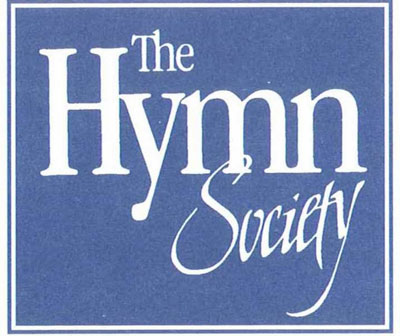History of Hymns: "Loving Spirit"
By Jonathan Hehn

Shirley Erena Murray
“Loving Spirit”
by Shirley Erena Murray;
The Faith We Sing, No. 2123
Loving Spirit, Loving Spirit,
you have chosen me to be.
You have drawn me to your wonder,
you have set your sign on me.*
*Text copyright © 1987 The Hymn Society (Admin by Hope Publishing Co., Carol Stream, IL 60188). All rights reserved. Used by permission.
“Loving Spirit” is a hymn celebrating the many ways the Holy Spirit acts in our lives. It is rich in imagery and is a perfect song to use in the Easter and post-Pentecost seasons, when the church places extra emphasis on the workings of the Spirit. This is the first of four articles in the month of April that will explore hymns especially appropriate for Eastertide.
Author Shirley Murray hails from New Zealand, where she still lives. She is a Presbyterian with Methodist roots whose work is celebrated across a broad spectrum of Christian traditions, both in her native country and across the world. Her texts frequently explore new or challenging theological concepts and imagery, and they often address social justice concerns as well. In a 2009 article from the New Zealand Presbyterian magazine Spanz, Murray says of her own work that “[w]e need ‘comfort hymns’ but you can’t let that dominate. [One needs] to be taken out of [one]self and into the world.”1 Indeed, examples of her most well known hymns bear out that conviction, such as “Touch the Earth Lightly,” “Star-child, earth-child,” and “For Everyone Born.”
“Loving Spirit” is one of Murray’s earlier texts. While it is rich in imagery, it offers more in the way of novel exploration of God’s nature rather than outright confrontation of a theological or social justice issue. Themes of God’s immanence and intimacy pervade this text; each stanza explores a relational metaphor for God, first as mother (stanza 2), then as father (stanza 3), then as lover and friend (stanza 4). Though the address in stanza 1 is to the “Spirit,” Neal Plantinga wisely observes that although it “appears to be addressed to the Holy Spirit. . . [‘Loving Spirit” is] addressed instead to the triune God. . . I think so because the hymn in its second stanza says that the loving spirit ‘feed[s] me with your very body, form[s] me of your flesh and bone.’”2 Hymnary.org lists a plethora of Scripture references for this hymn. A more concise list, useful for planning worship, can be found on the website of Hope Publishing Company, which holds the copyright for this text.3
“Loving Spirit” is found in Murray’s first collection, In Every Corner Sing (Hope Publishing, 1992). It was initially printed, though, in the 1990 Presbyterian Hymnal, and has subsequently been published in many other hymnals, including—as cited in this article—the United Methodist Church’s 2000 supplement The Faith We Sing (No. 2123).
There have also been arrangements of this hymn for choir, handbells, and organ, so opportunities are abundant for introducing it in ways other than as a congregational song.
Because it is a relatively new hymn, and one written without “proper” tune, “Loving Spirit” has been paired with several tunes since its first appearance. The Presbyterian Hymnal (1990) set it to the tune OMNI DIE by the sixteenth-century German monk, David Gregor Corner. Though the tune itself is sturdy, the structure of OMNI DIE doesn’t match well with the structure of Murray’s text. As noted before, each stanza of her text explores a different metaphor for God -- Spirit as mother, father, friend and lover. These stanzas stand each on their own. OMNI DIE is a double length tune; when one sings “Loving Spirit” to it, the stanzas are necessarily combined and thus not able to stand alone with their own integrity. The simile of a mother, especially, is lost since it thus becomes the second half of the combined first stanza. The father simile by contrast, stands out because it begins the combined second stanza. One might infer that, given her concern for inclusivity in her texts, Murray would prefer the feminine imagery for God to stand equally alongside the masculine imagery.
Several more recent hymnals have paired “Loving Spirit” with a tune by Taiwanese hymnologist I-to Loh called CHHUN-BIN; that melody is reminiscent of an Indian raga. Singing “Loving Spirit” to the gently flowing unison melody and subtly asymmetrical rhythm of CHHUN-BIN provides a vastly different Affekt compared to the traditional western, four-part construction and strict duple meter of OMNI DIE. CHHUN-BIN has the advantage of being a single-length tune, so each of the stanzas of Murray’s text are able to stand on their own. It is also hauntingly beautiful and mysterious sounding to this Western musician’s ear. A congregation not accustomed to Eastern musical aesthetics, however, may find CHHUN-BIN difficult to sing. Michael Hawn, the long-time author of this column, offers advice on how to perform “Loving Spirit,” sung to CHHUN-BIN, using a simple compliment of percussion instruments alongside the keyboard and voices.
The Faith We Sing provides yet another tune for “Loving Spirit,” KINGDOM by V. Earle Copes. The pairing of KINGDOM and “Loving Spirit” is particularly strong. The triple meter of the tune flows more easily than the duple meter OMNI DIE, and thus helps highlight the flow of the text. The tune also stops at a half-cadence after the second phrase; stanzas one and four of Murray’s text do likewise, coming to a full stop after the second phrase. Because of that parallel, KINGDOM seems to be a natural fit for the stanzas of “Loving Spirit.”
For good reason, Murray’s hymns have taken root in Christian communities throughout the world over the last three decades. Her deep, yet never forced, exploration of God’s nature in “Loving Spirit” exemplifies her genius as a text writer. In the season of Easter, as the church looks with expectation toward the coming of the Spirit at Pentecost, Murray’s hymn “Loving Spirit” offers a useful insight into the nature of God as Spirit. For those communities across the globe who choose to sing this hymn, “Loving Spirit” will surely prove to be a true source of inspiration.
1 Amanda Wells, “Hymn writer stresses the power of words,” Spanz Magazine (ISSN 1179-3473). http://www.presbyterian.org.nz/publications/spanz-magazine/2009/december-2009/hymn-writer-stresses-the-power-of-words.
2 From a note found on Hymnary.org. http://www.hymnary.org/text/loving_spirit_holy_spirit.
About this month’s guest writer:
Jonathan Hehn, OSL, is a Presby-Lutheran musician and liturgist currently serving Good Shepherd Lutheran Church and Saint Leo University in Tampa, Florida. He is a passionate practitioner, writer, and thinker.
This article is provided as a collaboration between Discipleship Ministries and The Hymn Society in the U.S. and Canada. For more information about The Hymn Society, visit thehymnsociety.org.


Contact Us for Help
View staff by program area to ask for additional assistance.
